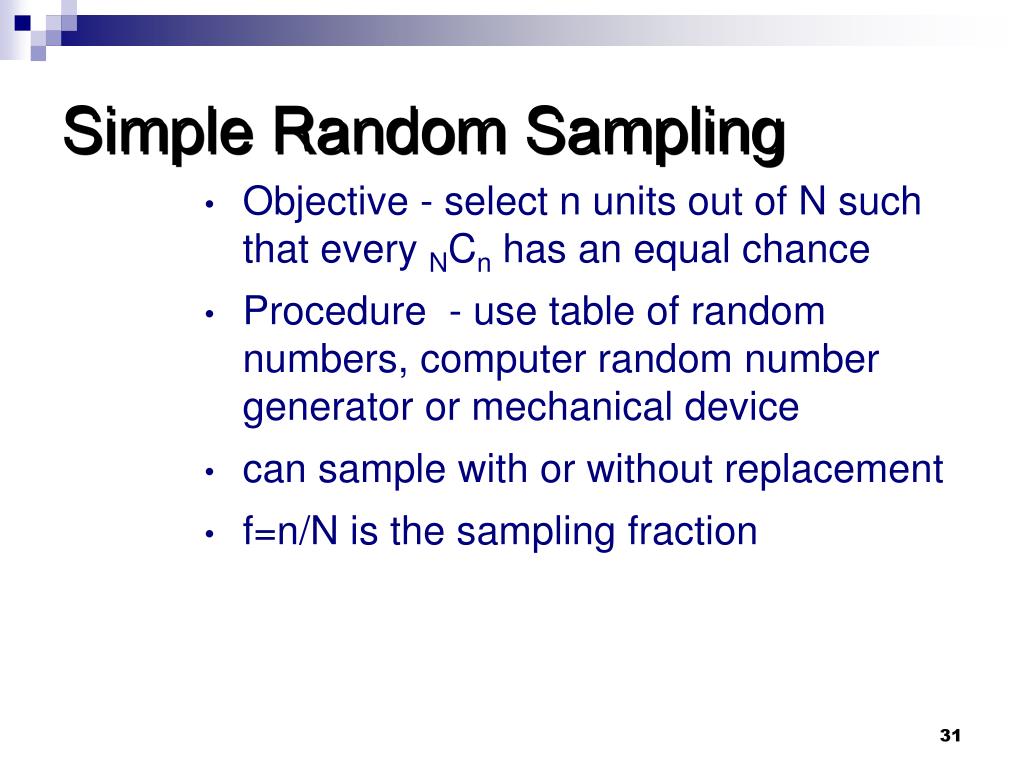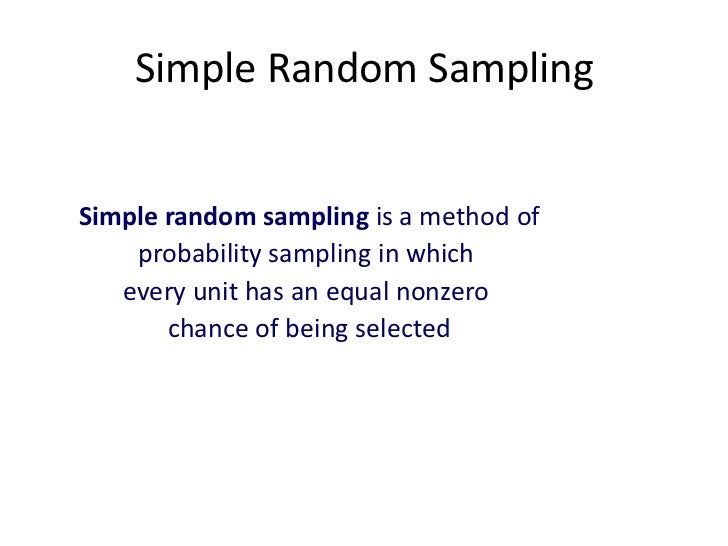

This very nice feature -driven by the law of large numbers- becomes more apparent with increasing sample sizes. The second reason why simple random sampling is highly desirable is that it tends to result in samples that are representative for the populations from which they were drawn on all imaginable variables. Simple Random Sampling - Representativity This assumption -really deserving a tutorial of its own- is the single most important assumption for common statistical procedures. We're currently working on a tutorial that thoroughly explains the meaning and the importance of this assumption.

But why is it so important? The first reason is that simple random sampling satisfies the IID assumption: independent and identically distributed variables. So far, we discussed what simple random sampling is.

If this doesn't hold, then a finity correction is in place. Very briefly, however, the problem gets less serious as we sample fewer units from a larger population when sampling 4 marbles out of 1,000 (instead of 10) marbles, SRSWOR is almost identical to simple random sampling.Ī very basic rule of thumb is that bias from using SRSWOR can be neglected when the sample size is less than 10% of the population size. So how serious is this problem? Well, this discussion really deserves a tutorial of its own. SRSWOR is different from simple random sampling necessary for most standard statistical tests. Since this is obviously a bad idea, SRSWOR is usually preferred over simple random sampling here. Most prominently, if we survey a population of people, SRS may result in persons receiving the same questionnaire multiple times. If you think about the example with the marbles, you'll probably see that it doesn't translate nicely to some real world situations. Note that this violation gets worse as we sample more units from a smaller population. This is how SRSWOR violates our definition of simple random sampling. The other 9 units each have a chance of 1 in 9 = 0.11 of being sampled as the second unit. If we don't replace it before sampling a second unit, however, the first unit we sampled has a zero chance of being sampled. Right, for the first marble we sample, each marble has a 0.1 chance of being sampled. Not replacing the marbles we sampled results in simple random sampling without replacement, often abbreviated to SRSWOR. This may happen because we need to replace each marble we sampled. If you took a good look at the figure, it may surprise you that marble 5 occurs twice in our sample. Simple Random Sampling without Replacement This is precisely what we meant with our definition of simple random sampling. Each time we sample a unit, all units have similar chances of being sampled. This generalizes to all subsequent marbles being sampled. When sampling the second marble, each marble still has a 0.1 chance of being sampled. When sampling the first marble, each marble has the same chance of 0.1 of being sampled. The idea is illustrated by the figure below. We repeat this procedure n times for drawing a sample of size n.

We record one or more of its properties (perhaps its color, number or weight) and put it back into the vase. Benefits Of Simple Random Sampling Simple Random Sampling with Replacement - ExampleĪ textbook example of simple random sampling is sampling a marble from a vase.


 0 kommentar(er)
0 kommentar(er)
